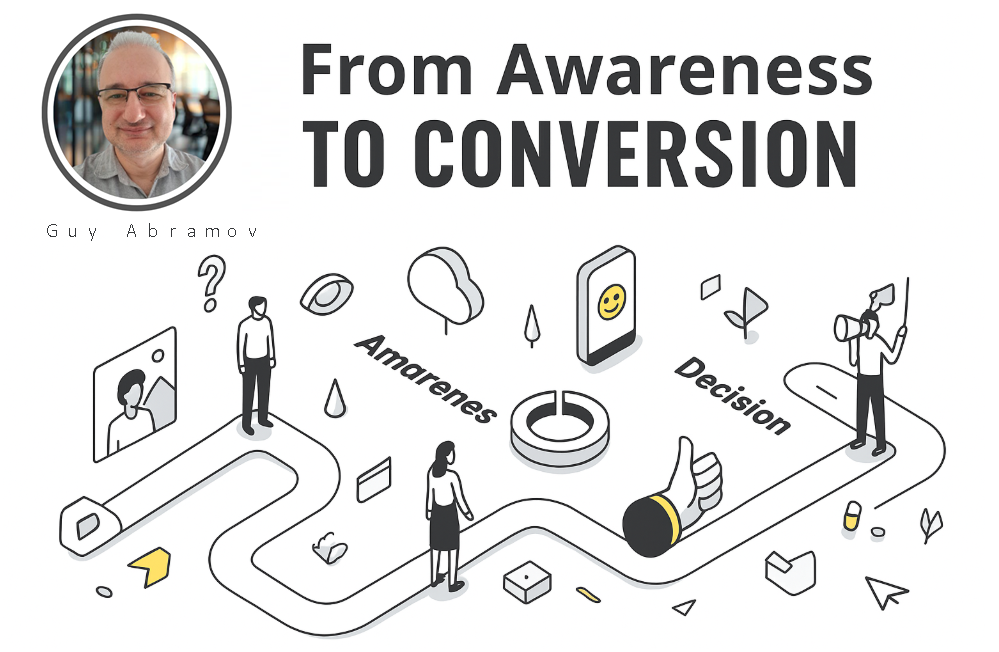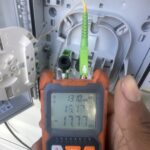If there’s one thing I’ve learned in nearly two decades of running Google Ads campaigns, it’s that most businesses underestimate the importance of mapping their customer journey. They want leads, sales, and conversions, but they forget that people don’t wake up in the morning ready to buy. They need time, information, trust, and the right message at the right stage of their decision-making process.
At ProbizGrow Digital, founded by Guy Abramov, I’ve seen this pattern play out across industries, from eCommerce brands to B2B startups and global corporations. Success doesn’t come from a single brilliant ad or a quick-fix campaign. It comes from understanding the funnel – awareness, consideration, and conversion – and designing a strategy where each step guides people closer to becoming paying customers.
In this article, I’ll break down the digital customer journey, show you how ads play different roles at each stage, and explain how you can structure campaigns and budgets to maximize performance.
Why Mapping the Customer Journey Matters
Think about investing for a moment. If you put all your money into one stock, you’re gambling. But if you diversify across industries, bonds, ETFs, and growth vs. value plays, you’re managing risk and giving yourself a higher chance at long-term gains.
Digital marketing is no different. Putting 100% of your ad budget into one type of campaign – say, only Google Search ads targeting high-intent keywords – might bring some results, but you’re ignoring a massive part of the funnel. You’re missing the people who don’t know you yet, the ones who are still comparing options, and the ones who need nurturing before they decide.
Mapping the customer journey means respecting how people actually buy: slowly, in steps, and with multiple touchpoints.
Stage 1: Awareness – Catching Attention in a Noisy World
Awareness is the widest part of the funnel. Here, your audience doesn’t know you exist, and in many cases, they aren’t actively searching for what you offer.
Your goal at this stage isn’t to push for a sale. It’s to show up, make an impression, and create familiarity. Think of it as planting seeds.
What works at the awareness stage?
- YouTube Ads: short, engaging video content that introduces your brand or showcases a problem your product solves.
- Display Campaigns: visual ads targeting audiences based on interests, demographics, or in-market signals.
- Discovery Ads: great for getting in front of people browsing YouTube, Gmail, and Google Discover feeds.
- Social Ads (Meta, TikTok, LinkedIn): depending on your industry, these platforms expand your top-of-funnel reach.
The mindset here is simple: you’re buying attention. Not conversions. Impressions and video views matter more than clicks or form fills.
At ProbizGrow Digital, I often advise clients to dedicate around 20-30% of their total budget to awareness campaigns. It feels counterintuitive at first – why pay for ads that don’t bring immediate leads? But over time, those audiences become cheaper to convert because they already know your brand.
Stage 2: Consideration – Educating and Building Trust
Once you’ve introduced yourself, the next challenge is guiding potential customers as they explore solutions. At this stage, they’re aware of the problem and actively considering different options – including your competitors.
Here, your job is to show why you’re the better choice. You’re not just fighting for visibility, but for trust.
What works at the consideration stage?
- Search Ads (mid-intent keywords) – instead of targeting just “buy [product] near me,” target terms like “best [product] for X” or “how to choose [service].”
- Remarketing Campaigns – show ads to people who watched your awareness videos, visited your site, or engaged with your content but haven’t converted.
- Content-Driven Campaigns – promote case studies, guides, or comparison sheets. For B2B clients, this is where webinars or free consultations work.
- Custom Intent Targeting on YouTube – reach people who are searching for related solutions on Google but aren’t ready to buy yet.
Metrics here shift from impressions to engagement – clicks, time on site, downloads, sign-ups. You’re measuring how much attention you can hold, not just how much you can grab.
I usually recommend clients put about 30-40% of their budget into this stage. It’s the bridge between brand awareness and actual conversions, and skipping it is one of the biggest mistakes I see.
Stage 3: Conversion – Closing the Deal
By now, your audience knows who you are and has interacted with your brand. They’re warmed up, familiar, and much more likely to act.
This is where high-intent campaigns shine. Your goal is clear: turn interest into sales, leads, or bookings.
What works at the conversion stage?
- Google Search (high-intent keywords) – direct purchase queries like “buy,” “hire,” “near me,” or product-specific terms.
- Shopping Campaigns (for eCommerce) – show your products with pricing and reviews right at the top of search results.
- Remarketing (bottom funnel) – target cart abandoners, trial users, or anyone who showed deep intent but hasn’t pulled the trigger.
- Performance Max Campaigns – Google’s AI driven format that pulls signals across all networks to drive conversions.
This stage should usually take 40-50% of your budget, because it’s where you see direct ROI. But remember, its success depends heavily on the first two stages. Conversion campaigns work best when you’ve already done the job of awareness and consideration.
Why Different Formats Matter at Different Stages
One of the rookie mistakes I see is using the wrong ad formats at the wrong time. For example:
- Running a Performance Max campaign to cold audiences who have never heard of you will usually waste budget.
- Using a 2 minute explainer video in remarketing can work wonders, but it won’t perform as well in a cold awareness campaign.
- Display ads with strong discounts are powerful for remarketing but meaningless to people in the awareness phase.
Choosing the right format for the right stage is just as important as the message itself.
How Budget Allocation Mirrors Investment Strategy
The parallels between investing and digital marketing budgets are uncanny. Just like you wouldn’t put your entire portfolio in risky growth stocks, you shouldn’t put your entire ad budget into one campaign type.
Here’s a structure I often recommend:
- 20-30% Awareness – planting seeds.
- 30-40% Consideration – nurturing and educating.
- 40-50% Conversion – harvesting leads and sales.
This split isn’t fixed. Some industries (like fast moving eCommerce) may lean heavier on conversions. Others (like B2B SaaS with long sales cycles) may need more awareness and consideration. But the principle remains the same: balance.
Common Mistakes Businesses Make
After working with hundreds of clients, I’ve noticed the same pitfalls repeat:
- Chasing leads too early – expecting people to convert without trust.
- Over optimizing for clicks – forgetting that impressions and engagement also have value.
- Ignoring remarketing – leaving warm prospects on the table.
- Budget imbalance – putting 80% into high-intent search and starving the funnel.
- Not measuring correctly – focusing on vanity metrics instead of the right KPIs at each stage.
Final Thoughts
Digital marketing is not about quick wins. It’s about building a system that guides people from not knowing you exist to trusting you enough to buy. That system is the customer journey.
At ProbizGrow Digital and Guy Abramov, I have spent years refining how we map this journey with clients. The formula is simple but powerful: meet people where they are, give them the right message for their stage, and structure your budget like an investor diversifies a portfolio.
When you respect the customer journey, you stop forcing conversions and start creating them naturally. That’s the difference between campaigns that fizzle out and campaigns that scale.





